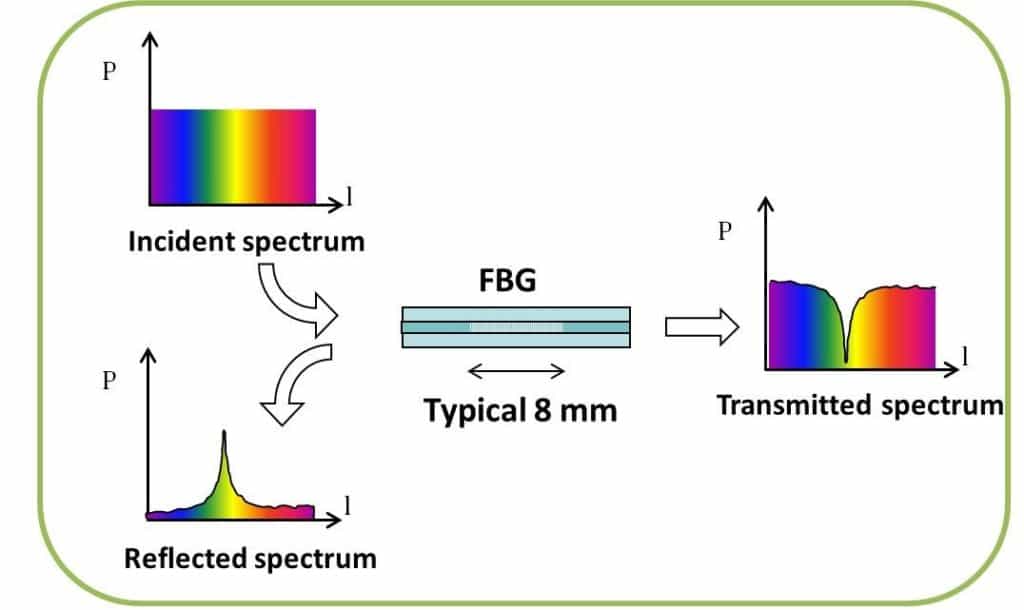Fiber Bragg Gratings are made by laterally exposing the core of a single-mode fiber to a periodic pattern of intense laser light. The exposure produces a permanent increase in the refractive index of the fiber’s core, creating a fixed index modulation according to the exposure pattern. This fixed index modulation is called a grating.
At each periodic refraction change a small amount of light is reflected. All the reflected light signals combine coherently to one large reflection at a particular wavelength when the grating period is approximately half the input light’s wavelength. This is referred to as the Bragg condition, and the wavelength at which this reflection occurs is called the Bragg wavelength. Light signals at wavelengths other than the Bragg wavelength, which are not phase matched, are essentially transparent. This principle is shown in Figure 1.

Therefore, light propagates through the grating with negligible attenuation or signal variation. Only those wavelengths that satisfy the Bragg condition are affected and strongly back-reflected. The ability to accurately preset and maintain the grating wavelength is a fundamental feature and advantage of fiber Bragg gratings.
The central wavelength of the reflected component satisfies the Bragg relation: λBragg = 2nΛ, with n the index of refraction and Λ the period of the index of refraction variation of the FBG. Due to the temperature and strain dependence of the parameters n and Λ, the wavelength of the reflected component will also change as function of temperature and/or strain, see Figure 2. This dependency is well known what allows determining the temperature or strain from the reflected FBG wavelength.








